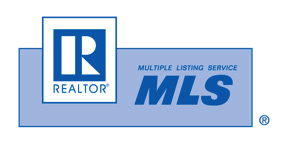Understanding a CMA: Your First Step Toward Pricing Your Home Right
When you’re thinking of selling your home, one of the most important steps is setting the right price. Price it too high, and your home might sit on the market without offers. Price it too low, and you could leave money on the table. This is where a Comparative Market Analysis (CMA) becomes essential.
A CMA is a detailed report prepared by a real estate professional that evaluates your home’s value based on recent sales of similar properties in your area. Unlike a formal appraisal, which is conducted by a licensed appraiser, a CMA gives you a market-based estimate of what buyers might be willing to pay for your home under current conditions.
Real estate agents often provide a CMA for free as part of their services. It typically includes data on active listings, pending sales, and recently sold homes—often referred to as “comps.” These insights can help you understand local market trends and how your property compares to others.
In this guide, you’ll learn how to get a CMA, what to expect from the report, and how to use it to your advantage when selling your home. We’ll also explore when a CMA may not be enough and whether you should consider a professional appraisal instead.
For expert help, consider reaching out to a local real estate agent who can create a personalized CMA for your property. If you’re new to the process, check out this helpful Investopedia article on CMAs to build your foundation.
What Information Is Included in a CMA?
A Comparative Market Analysis (CMA) compiles data to help you understand how your property stacks up against others in the area. The report typically includes several categories of homes: recently sold properties, current listings, pending sales, and expired listings. Each category tells you something unique about market trends.
Sold homes provide the clearest indication of what buyers are willing to pay for properties like yours. These sales are often the most heavily weighted when determining your home’s market value. Active listings, while informative, show what sellers hope to get—not necessarily what they’ll receive. Pending sales can help identify pricing trends, especially in fast-moving markets.
A good CMA also includes detailed information on each comparable property—or “comp.” This may include the home’s square footage, number of bedrooms and bathrooms, lot size, year built, and upgrades or improvements. Your real estate agent will use this data to adjust values and make a fair comparison to your own home.
Beyond raw data, some CMAs include market statistics such as average days on market, price-per-square-foot averages, and neighborhood trends. These insights help sellers make smart, evidence-based decisions about their listing price.
It’s also important to understand that no two properties are exactly alike. A qualified real estate agent can interpret this information and tailor a CMA to your home’s unique features. For a deeper look at what’s typically found in a CMA report, you can explore Redfin’s overview of CMA data.
How to Request a CMA
Requesting a Comparative Market Analysis (CMA) is easier than you might think. Most homeowners start by contacting a licensed real estate agent, as agents typically provide CMAs free of charge as part of their services. This is especially true if you’re considering selling your home with them.
To begin, reach out to an experienced local real estate professional who understands your neighborhood and market. It’s helpful to choose someone who has handled similar properties. They’ll know how to find the best comps and offer accurate pricing recommendations.
Be prepared to share basic information about your home: square footage, number of bedrooms and bathrooms, any upgrades or renovations, and the overall condition. The more details you provide, the more accurate your CMA will be.
After gathering the necessary data, your agent will prepare a report and go over it with you. This review is your chance to ask questions and gain clarity on how your home compares to others in the area. If you’re not ready to sell immediately, many agents are still happy to provide a CMA and build a future relationship.
Some online platforms also offer automated CMAs, but they often rely on algorithms rather than human expertise. These tools can be a starting point, but they typically lack the nuance of an agent-prepared report.
For additional guidance, check out this detailed resource from Investopedia on how CMAs work.
What to Look for in a CMA Report
Once you receive your CMA, it’s important to understand what you’re looking at. A well-prepared CMA will include a list of comparable properties—homes similar in size, age, location, and condition that have recently sold, are currently on the market, or were listed but didn’t sell.
Start by reviewing the sold comps. These show what buyers have actually paid for similar homes in your area. Pay attention to the sale price per square foot, the number of days on market, and how closely those homes resemble yours. This gives you a realistic range of what buyers might pay for your property.
Next, review active listings. These show what homes are currently competing for buyers’ attention. While they don’t confirm value, they offer insight into local pricing trends and expectations. If your home is priced too high compared to these, it could struggle to attract interest.
Also consider expired or withdrawn listings. These represent homes that failed to sell, often due to overpricing or poor marketing. They serve as cautionary examples of what not to do when pricing your home.
A good CMA should also account for differences in condition, upgrades, lot size, and neighborhood appeal. Small differences can have a significant impact on value. That’s why it’s best to review the report with your real estate agent, who can explain adjustments and help you interpret the data.
For more details on pricing strategies, check out our guide on flat fee real estate brokers, which can help you save while maximizing your listing price.
Conclusion: Using a CMA to Make Smarter Selling Decisions
A Comparative Market Analysis (CMA) is one of the most valuable tools when it comes to pricing your home accurately. Whether you’re working with a real estate agent or reviewing data on your own, understanding the CMA helps you make informed choices.
With a well-prepared CMA, you’ll know how your home compares to others in the market, what buyers are currently paying, and how to price your home competitively to avoid sitting on the market too long or leaving money on the table.
Remember, markets shift. Even in the same neighborhood, values can change quickly depending on demand, interest rates, and economic trends. A CMA isn’t just a one-time tool—it should be reviewed and updated if your listing stays on the market longer than expected.
If you’re not working with an agent yet, consider reaching out to a local real estate expert who can provide a personalized CMA and guide you through the selling process. For a broader overview of how a CMA compares to an official home appraisal, check out this helpful article from Investopedia.
By starting with the right data and insights, you’ll boost your confidence and your chances of a successful, profitable home sale.


